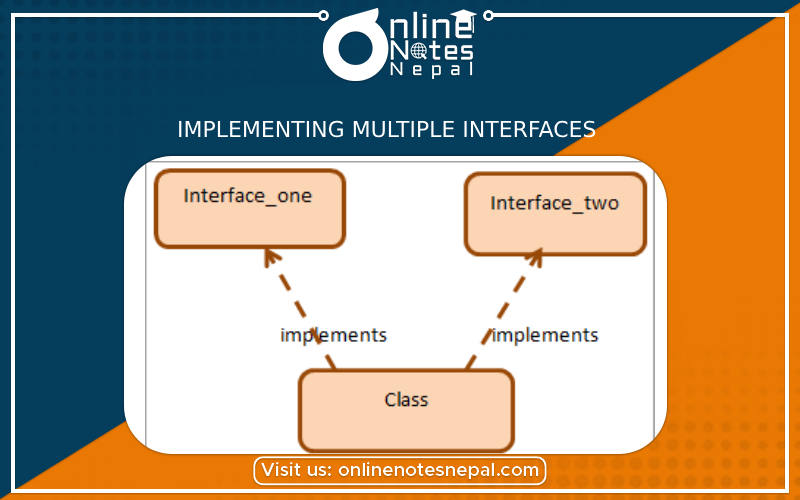Published by: Dikshya
Published date: 30 Jun 2023

When implementing multiple interfaces in a programming language, you typically follow these steps:
Define the interfaces: Start by defining the interfaces you want to implement. An interface declares a set of methods that a class must implement. Each interface represents a specific contract or behavior that the implementing class should adhere to.
Create a class: Create a class that implements the interfaces you defined in the previous step. In most programming languages, a class can implement multiple interfaces by separating them with commas.
Implement interface methods: Implement the methods defined in each interface within the class. The methods should match the signatures (name, parameters, return types) specified by the interfaces. The class must provide a concrete implementation of each method.
Use interface methods: Once the class implements the interfaces, you can create objects of that class and use the interface methods to interact with the objects. This allows you to treat objects of the class as instances of each interface they implement, enabling you to work with different behaviors based on the interfaces.
Example:
// Define interfaces
interface Printable {
void print();
}
interface Displayable {
void display();
}
// Implement interfaces in a class
class MyClass implements Printable, Displayable {
public void print() {
System.out.println("Printing...");
}
public void display() {
System.out.println("Displaying...");
}
}
// Usage
public class Main {
public static void main(String[] args) {
MyClass myObject = new MyClass();
// Accessing methods through the Printable interface
Printable printable = myObject;
printable.print();
// Accessing methods through the Displayable interface
Displayable displayable = myObject;
displayable.display();
}
}
In the example above, the class MyClass implements both the Printable and Displayable interfaces. It provides concrete implementations of the print() and display() methods. In the main() method, you can see how you can access these methods through the respective interfaces.